Exploring Vintage Old Hollywood Dresses: A Timeless Fashion Icon
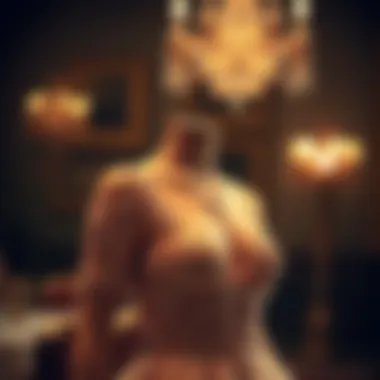
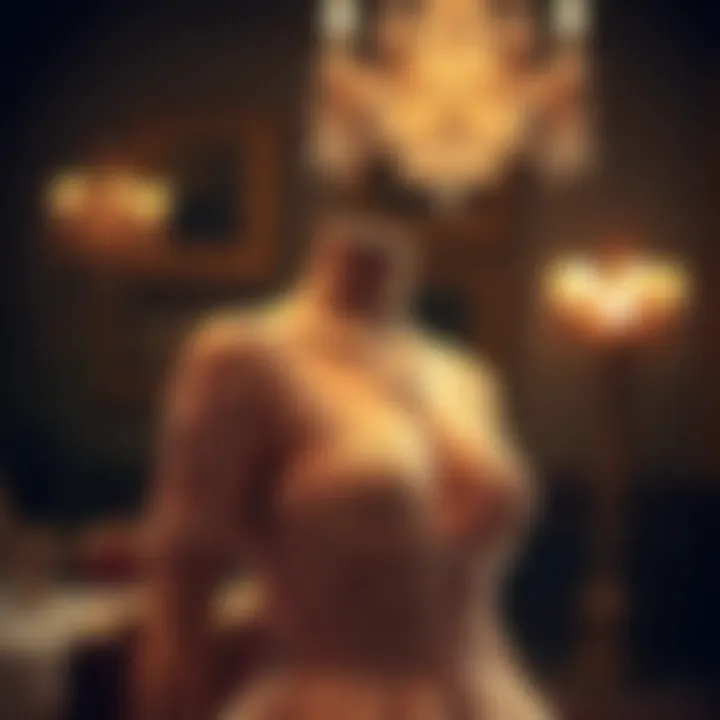
Intro
The world of vintage Old Hollywood dresses serves as a treasure trove, resonating with glamour and history. Each stitch tells a story of an era defined by elegance, ambition, and a flair for the dramatic. From the sweeping gowns worn by silver screen legends to the intricate details that whispered architectural artistry, these garments encapsulate a transformative time in fashion. This article aims to provide an in-depth exploration of the key characteristics that set these dresses apart.
As we venture deeper, we will not only look into their historical significance and craftsmanship but also discuss how these timeless designs continue to influence contemporary fashion. By marrying the past with today’s wardrobe, we encourage an appreciation for sustainable clothing choices that echo the intricate artistry of bygone days.
Clothing Trends Analysis
Current Trends in Seasonal Fashion
As the fashion landscape shifts, the influence of vintage Old Hollywood dresses often sneaks back into the spotlight. Designers and brands alike draw inspiration from classic shapes and silhouettes, repurposing them for modern audiences. These dresses are not just garments; they serve as foundations for seasonal trends. Consider the resurgence of bold colors and glamorous fabrics reminiscent of the 1950s. Lightweight taffeta and satin are being embraced for formal occasions, echoing the opulence of the silverscreen. Moreover, statement sleeves and fitted bodices are making a comeback, as consumers seek not just to look good but to feel the nostalgia.
"Fashion always comes back around, it’s just the twist that changes, like a cycle repeating itself with a fresh spin."
Iconic Styles Through Decades
Every decade in Old Hollywood offered something distinctive; for example:
- 1920s: The flapper style characterized by drop waists and fringe details.
- 1930s: Elegant bias-cut dresses that hugged the body, popularized by stars like Jean Harlow.
- 1940s: Wartime practicality gave way to glamor, seen in the structured silhouettes of Rita Hayworth.
- 1950s: Full skirts and fitted bodices, exemplified by dresses worn by Audrey Hepburn and Grace Kelly.
Each era remains well-loved, not just for its aesthetics but also for how it resonates with cultural shifts. Women began expressing their independence through fashion, pushing boundaries and challenging norms along the way.
Styling Tips and Techniques
Essential Tips for Wardrobe Versatility
Integrating vintage Old Hollywood dresses into everyday wardrobes may seem challenging, but a few savvy tips can enhance versatility:
- Accessorize Wisely: Balance the bold lines of a vintage dress with contemporary accessories. A pair of sleek pointed heels or a minimalist clutch can modernize the look.
- Layering: Early morning chill? Try a fitted turtleneck under a sleeveless number, or a tailored blazer over it.
- Mix and Match: Combine your vintage dress with everyday staples—try pairing it with denim jackets for a casual brunch look.
Layering Techniques for Effortless Looks
Layering is not just practical; it can visually elevate your aesthetic. For instance:
- A light, sheer cardigan over a fitted dress creates an airy vibe, suitable for warmer days.
- Integrating a belt can help maintain silhouette while allowing the flexibility of moving elements in and out of your outfit.
As we peel back the layers of vintage fashion, we find remarkable stories interwoven in the fabric. Rather than mere nostalgia, these styles embody a practical, sustainable approach to fashion in today’s world.
To learn more about vintage aesthetics and their place in contemporary attire, check out resources like Wikipedia and Britannica. Further discussion can also be found in communities on Reddit where enthusiasts share their takes on reviving vintage styles.
Prologue to Vintage Old Hollywood Dresses
The allure of vintage Old Hollywood dresses transcends mere fabric and thread; it's about the stories they tell and the era they embody. In this section, we’ll explore why these dresses are more than just remnants of a long-gone glamour era—they're cultural artifacts with lessons to impart about fashion, femininity, and style.
Definition and Characteristics
Vintage Old Hollywood dresses are typically characterized by their elegance, bold silhouettes, and the rich textures that defined the fashion landscape of the 20th century. The term "vintage" often refers to clothing that dates back at least twenty years, but when we talk about Old Hollywood, we're diving even deeper into a particular aesthetic that flourished mostly from the 1920s through the 1960s.
These dresses usually feature:
- Flattering silhouettes: Styles like the sheath, A-line, and ball gown highlight the curves and create that coveted hourglass figure.
- Luxurious fabrics: Think silk, satin, and lace that drape and move beautifully, adding an element of fluidity and grace.
- Exquisite detailing: Embroidery, sequins, and beading often adorn these garments, making each piece a work of art.
In essence, the dresses function as a canvas that reflects social attitudes and cultural shifts. While they might have been a fashion statement for the elite, the impact they had on society's perception of beauty and femininity remains invaluable.
Cultural Impact of Old Hollywood
Old Hollywood's influence stretches far beyond the silver screen. The fashion choices made by stars like Marilyn Monroe and Audrey Hepburn dictated trends that still resonate in today's styles, showcasing the powerful interplay of celebrity culture and fashion design.
To unpack this further:
- Fashion as Identity: For many actors and actresses, their styles were not merely personal choices but brand strategies that solidified their on-screen personas. The glamour of these dresses helped set a standard for modern celebrity, where appearance can influence public perception significantly.
- Influence on Social Norms: As films reached wider audiences, the styles depicted became aspirational. Women emulated the elegant dresses they saw on screen, which in turn changed their own shopping habits and interest in fashion.
Ultimately, vintage Old Hollywood dresses serve as a lens through which we can view societal values of their time—serving as a physical reminder of aspiration, artistic expression, and the never-ending evolution of style in the face of changing cultural landscapes.
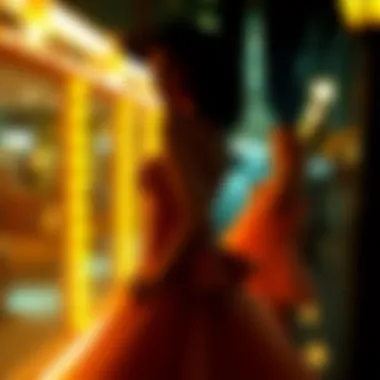

By examining these characteristics and the cultural weight they carry, we gain deeper insight into not just the clothing itself but the complex narratives woven throughout fashion history.
Historical Evolution of Fashion in Old Hollywood
Understanding the historical evolution of fashion in Old Hollywood is crucial for grasping how vintage dresses became icons in their own right. Fashion isn’t merely about clothes; it serves as a reflection of broader cultural shifts, societal norms, and artistic expressions of its time. In Old Hollywood, the ebbs and flows of fashion were deeply intertwined with the rise of cinema, showcasing not just trends but also the dreams and aspirations of the era. From the elegant silhouettes of the 1920s to the glam of the post-war years, fashion evolved swiftly, influenced by various factors including technological advancements and global events.
Early Beginnings: The Roaring Twenties
The Roaring Twenties churned out a dazzling array of styles, establishing a foundation for what vintage Old Hollywood would come to represent. After the end of World War I, America experienced a cultural awakening. Jazz music filled the air, and flappers challenged traditional standards of femininity. Dresses during this period were often characterized by dropped waistlines and loose fabrics, a stark contrast to the restrictive styles of previous decades.
- Key Elements of 1920s Fashion:
- Silhouettes: Straight cuts and boxy shapes that facilitated movement.
- Fabrics: Light materials like silk and chiffon were popular.
- Embellishments: Beadwork, fringe, and sequins adorned dresses, reflecting the era’s love for glitz.
Fashion icons like Clara Bow and Louise Brooks epitomized the spirit of the time through their daring garments, influencing everyday fashion and cinema wardrobes alike. These early films illustrated the close bond between fashion and film, making actors and their attire influential figures in setting style trends.
The Golden Age of Hollywood
Transitioning into the Golden Age of Hollywood, from the 1930s to the 1960s, was significant for the fashion narrative. This era introduced a more sophisticated and glamorous approach to styling. Dresses became more sculpted, with tailored silhouettes that highlighted curves, reflecting the evolving ideals of beauty and femininity.
- Signature Styles of the Golden Age:
- Hourglass Figures: Emphasized by cinched waists and flowing skirts.
- Fabrics: Heavier materials such as satin and taffeta provided structure and allure.
- Color Palettes: Rich colors and bold patterns entered the scene, marking a shift from the pastel tones of the past.
During this era, designers such as Adrian and Edith Head crafted iconic looks for stars like Joan Crawford and Rita Hayworth. Their designs did not just serve aesthetic purposes; they also defined and shaped characters, becoming a pivotal part of cinematic storytelling. When one sees the glamorous attire in movies like Casablanca or Gone with the Wind, it becomes apparent how dress and character development danced hand in hand.
Post-War Influence on Fashion
The post-war period brought a wave of change as society transitioned from wartime constraints to a new sense of freedom. This change profoundly impacted fashion trends, with an emphasis on optimism and youthful exuberance. The late 1940s and 1950s saw the introduction of styles that embodied an exuberant flair, catering to a new generation eager to express their individuality.
- Characteristics of Post-War Fashion:
- New Look: Christian Dior's revolutionary silhouette emphasized femininity with voluminous skirts and accentuated waists.
- Chic Daywear: Comfortable yet stylish dresses that reflected leisure and casual elegance became staples.
- Casual Trends: Simple, comfortable clothing options increased in popularity, influenced by changing lifestyles.
Fashion magazines, such as Vogue, captured and propagated these styles while influencing consumers. Stars like Marilyn Monroe amplified these trends, making her mark with figure-hugging designs that redefined attractiveness and desirability.
In summary, as we trace the historical evolution of fashion in Old Hollywood, it’s clear that each period not only reflects the aesthetic of the time but also encapsulates the cultural zeitgeist, allowing us today to appreciate vintage dresses as far more than mere garments. They are artifacts steeped in history that continue to inspire modern fashion thinkers and creators.
For further reading, you can explore: Wikipedia on Fashion History or delve into Britannica's Fashion Overview
By studying these transformations, designers, stylists, and fashion students can draw lessons that inform their contemporary practices, encouraging a renewed appreciation for the significance of vintage styles in today's world.
Signature Styles of Vintage Old Hollywood Dresses
In the realm of fashion, vintage Old Hollywood dresses hold a special place, embodying a unique blend of glamour and artistry. These garments are not merely clothing; they symbolize an era when sartorial excellence reigned supreme. The importance of exploring signature styles in vintage Old Hollywood dresses lies in understanding their cultural significance and their continuing influence on contemporary fashion. Each style tells a story, reflecting the social intricacies of the time while showcasing the creativity of designers who dared to push boundaries.
Glamorous Evening Gowns
Glamorous evening gowns are the epitome of vintage Old Hollywood charm. These dresses often featured luxurious fabrics like silk and satin, lavish embellishments, and intricate silhouettes. Designers such as Jean Louis and Adrian crafted gowns that not only accentuated the female figure but also exuded sophistication.
"A gown is more than just a dress; it’s a statement."
The allure lies in their elegant lines and the way they swept across the red carpets, leaving a lasting impression of grace and opulence. For instance, who could forget the iconic gown worn by Audrey Hepburn in "Breakfast at Tiffany's"? These designs often had long trains or dramatic necklines, making them the centerpiece of any glamorous affair.
Chic Cocktail Dresses
Chic cocktail dresses were another hallmark of vintage Old Hollywood fashion. Suitable for the more casual socialite gatherings, these dresses typically embodied playful elegance. Popularized by actresses like Marilyn Monroe, the cocktail dress was versatile, allowing for various fabric choices ranging from light cottons to sumptuous velvets. They often featured simple yet flattering lines that enhanced one’s shape, making them ideal for twirling on the dance floor.
In today’s fashion landscape, the cocktail dress continues to inspire modern looks. The ability to accessorize and layer with contemporary pieces gives a nod to that vintage charm while still fitting in with today’s trends.
Elegant Day Dresses
Elegant day dresses reflected the sophistication of everyday wear during the vintage Hollywood era. These dresses were characterized by simple cuts, soft colors, and feminine details. Think delicate floral patterns or polka dots combined with structured bodices, which conveyed a sense of casual charm suitable for daytime activities.
They were often made from breathable fabrics, allowing comfort without sacrificing style. These designs were not just for the silver screen; they found their way into the wardrobes of women from all walks of life, influencing how daywear is fashioned today.

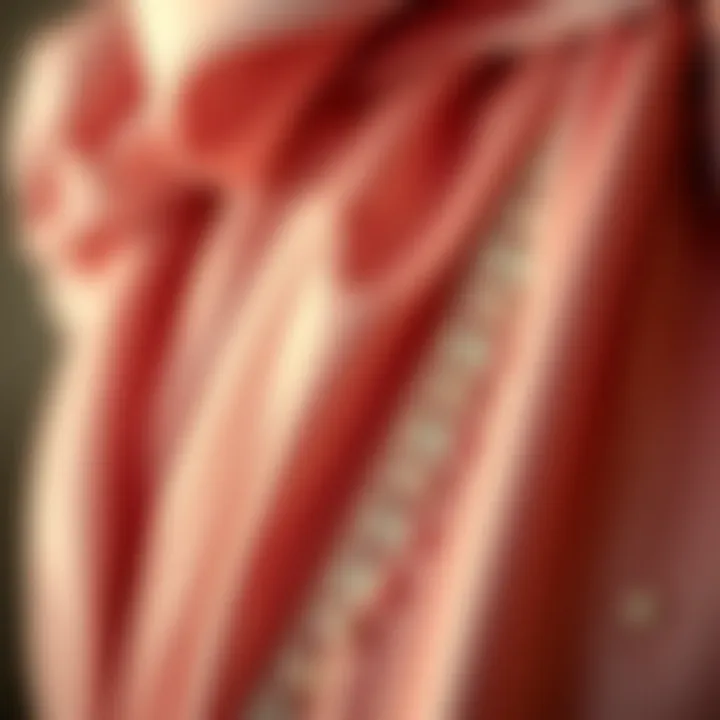
Influence of Fabrics and Patterns
Fabrics and patterns played a pivotal role in defining the character of vintage Old Hollywood dresses. Fabrics such as chiffon, taffeta, and organza were commonly used, each offering a different feel and appearance. The weight and texture of the fabric could transform a simple design into something extraordinary. Snazzy prints, stripes, and florals also found their way into this fashion tapestry, allowing personal expression within the constraints of era trends.
As designers continued to innovate, the patterns became bolder and more intricate—a reflection of the social zeitgeist and a departure from more conservative styles. Such choices in fabrics and patterns not only created visual interest but also allowed the wearer to communicate their personality through fashion.
The enduring legacy of these vintage old Hollywood dresses is found not only in their craftsmanship but also in their ability to evoke nostalgia while inspiring new generations of fashion enthusiasts.
Iconic Designers of the Era
The legacy of vintage Old Hollywood dresses cannot be discussed without giving due credit to the designers who shaped the aesthetics of the time. These creative minds not only defined a style but also set the stage for generations to come, weaving artistry into fabric and influencing cultural trends. Designers like Edith Head, Coco Chanel, and Mr. Blackwell were pivotal in pushing boundaries and reinventing fashion. Understanding their impact is crucial for anyone interested in the intricate relationship between fashion and identity.
The Impact of Edith Head
Edith Head was a titan in the world of costume design. Over a career that spanned five decades, her work transformed the visual landscape of film. She dressed countless stars and played a significant role in developing the iconic looks that would define cinematic elegance. Known for her meticulous attention to detail, she transformed ordinary fabric into statements of glamour.
Head won eight Academy Awards for her costume designs, and her influence went beyond the screen. Her ability to merge practicality with artistry made her a sought-after name in Hollywood. She was not just creating dresses; she was curating personalities and establishing a visual language in film that audiences would connect with on a deeper level.
"A costume must be an integral part of the character." - Edith Head
This belief shone through in her work, as she tailored outfits to suit the film's narrative and the actor's persona. Her innovative use of materials and colors brought a new dimension to costume design, laying the groundwork for future designers to build upon.
Coco Chanel’s Influence on American Fashion
Coco Chanel is synonymous with timeless style. The French designer brought a revolution to American fashion, championing a more relaxed yet elegant aesthetic. Her designs, such as the famous Chanel No. 5 and the classic Chanel suit, emphasize comfort without sacrificing sophistication. Chanel liberated women from the constraints of corseted dresses, introducing more functional and freeing silhouettes.
Her influence reached far beyond mere garments; she revolutionized how women perceived themselves. The little black dress, which she popularized, remains a staple in wardrobes today. By blending elegance with practicality, Chanel wrote a new chapter in women's fashion that resonated deeply in post-war America.
Mr. Blackwell’s Couture Vision
Mr. Blackwell, known for his flamboyant style, was a designer who dared to be different. Often described as a fashion visionary, he created pieces that were more theatrical than merely wearable. His designs often included daring cuts, lavish fabrics, and strong embellishments that set them apart from conventional styles. Blackwell's unique approach not only caught the eye of Hollywood stars but also brought high fashion into the public domain.
His annual "Worst Dressed List" created waves within the fashion industry, critiquing those who missed the mark while celebrating the trendsetters of the time. By engaging in this conversation about style and appearance, he turned fashion into an accessible art form, challenging people to consider their choices in a new light.
Mr. Blackwell’s work serves as a reminder that fashion is never just about clothing; it is about self-expression and identity. His legacy still sparks debates among designers and fashion enthusiasts alike, making him an enduring figure in the world of couture.
Celebrities and Their Signature Looks
The connection between celebrities and fashion, particularly vintage Old Hollywood dresses, is nothing short of mesmerizing. These films stars were not merely actors; they were icons who shaped not just movies but also the very fabric of society through their distinctive styles. Their looks often embodied the ethos of a generation, acting as a mirror to the cultural changes of the time. Understanding how these celebrities curated their wardrobes offers insight into why they became cultural touchstones—a phenomenon that goes beyond mere aesthetics.
Marilyn Monroe’s Iconic Style
Marilyn Monroe, a name that resonates across the ages, is perhaps the most notable figure when it comes to vintage Old Hollywood fashion. Monroe masterfully blended sensuality and sophistication. Her signature white halter-neck dress from "The Seven Year Itch" is still discussed in fashion circles for its bold, yet elegant silhouette. The way it billowed around her during that iconic subway scene practically redefined allure.
Monroe's influence extended past films; she became a symbol of femininity. Her choices often emphasized curves, showcasing a woman’s beauty without the layers of excess. Her penchant for vibrant colors and daring cuts can be seen reflected in modern fashion spaces, proving that her style is more than just a relic of the past.
Audrey Hepburn’s Timeless Elegance
When one thinks of elegance, Audrey Hepburn simply comes to mind. From her role in "Breakfast at Tiffany's," her little black dress designed by Hubert de Givenchy has stood the test of time as a quintessential piece. Hepburn never shied away from understated lines and classic cuts that accentuated her petite frame. Her fashion choices speak volumes about the power of simplicity.
She effortlessly navigated between everyday chic and high-class glamour. Hepburn's iconic moments, like wearing ballet flat shoes paired with stunning gowns, epitomize a blend of comfort and luxury that continues to inspire contemporary designers. This combination of grace and style positions her as a lasting paragon of fashion in both films and life.
Grace Kelly: The Epitome of Class
Grace Kelly, the actress-turned-princess, represented a unique fusion of Hollywood glamor and royal elegance. The dresses she wore onscreen achieved a flawless balance between sophistication and modernity. Her dress in "Rear Window" is infused with subtle hints of sexuality yet remains infinitely classy, an art mastered by few.
Kelly’s style reflected a moment when Hollywood’s golden age was transitioning, capturing a sense of timeless beauty. She understood the importance of how garments could convey authority and poise, making her one of the most celebrated style icons even decades after her passing. Her influence can be traced in modern bridal wear and evening gowns alike.
Bette Davis and Bold Choices
Bette Davis often broke boundaries with her fashion choices. Known for her dramatic flair, she wasn’t afraid to showcase her personality through bold and sometimes unusual dresses. In films like "All About Eve," one can observe how her outfits—often layered and eye-catching—mirrored the intricacy of her characters.
Davis’s fashion often reflected her mood, a phenomenon that certainly resonates today. She’s a powerful reminder that dressing is an art form where self-expression takes center stage. In a world that is increasingly about conformity, her daring approach continues to inspire the current generation of stylists and designers who appreciate creativity without limits.
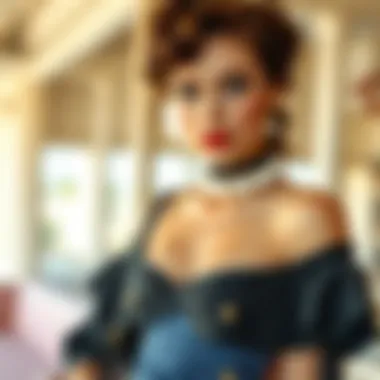
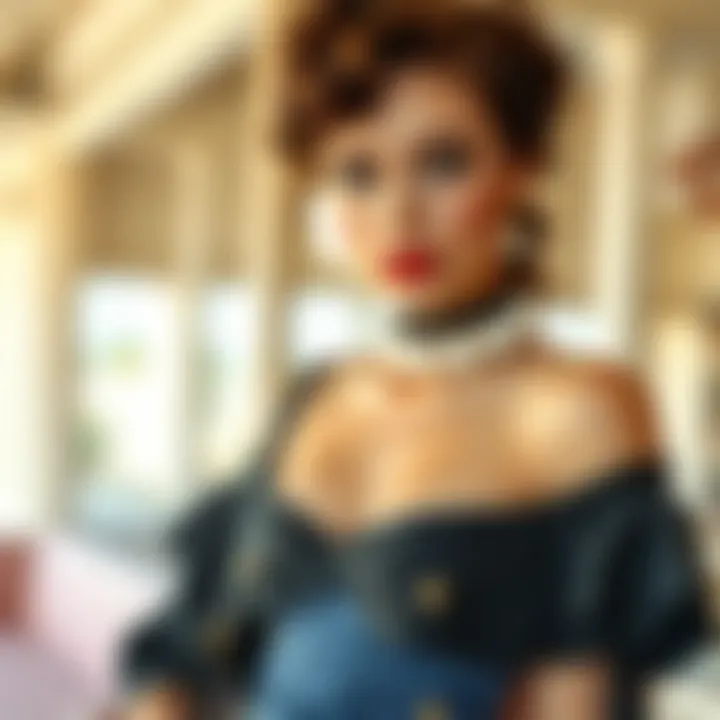
"Fashion is not something that exists in dresses only; it is in the sky, in the street, in our ideas, the way we live, what is happening." – Coco Chanel
The exploration of these iconic figures and their signature looks reveals their profound impact on the landscape of fashion. Each woman carried a distinct voice, a narrative that not only reflected their individuality but also signified broader cultural movements. Their enduring legacies continue to shape the fashion world, ensuring that their styles are not just remnants of an era, but living influences for the present and future generations.
The Relevance of Vintage Styles Today
In today’s fast-paced fashion world, the relevance of vintage styles remains stronger than ever. Old Hollywood dresses, characterized by their elegance and charm, transcend mere clothing. They symbolize a bygone era of grace and sophistication, capturing the essence of femininity and high craftsmanship. Whether it’s the intricate beadwork or the luxurious fabrics, these garments not only reflect personal style but also a deeper appreciation for history. The current focus on nostalgia in fashion serves as a pivotal reason for the resurgence of these vintage pieces.
Integrating Vintage into Modern Wardrobes
When it comes to integrating vintage Old Hollywood dresses into modern wardrobes, it’s about finding the sweet spot between timeless style and contemporary appropriateness. For instance, pairing a classic A-line silhouette from the 1950s with today’s edgy ankle boots can create a striking contrast. Similarly, layering a vintage cocktail dress with a modern leather jacket can provide an interesting blend of textures and eras. Some tips include:
- Mix and match: Don’t hesitate to combine vintage pieces with modern garments. For example, a simple tee can lend a casual vibe to a glamorous vintage skirt.
- Accessorize thoughtfully: Scarves, statement jewelry, or modern handbags can bridge the gap between old and new.
- Tailoring: Often, vintage dresses may need alterations to suit current trends and personal fit, making it essential to craft a tailored look that feels right for you.
By creating unique outfits this way, you not only wear history but also tell your own story through fashion.
Sustainable Fashion and Vintage Resurgence
The resurgence of vintage fashion ties closely with the growing awareness of sustainable practices in clothing. In an age where fast fashion dominates, adopting vintage styles is like discovering hidden gems that contribute positively to environmental sustainability. Reusing and giving a second life to these garments reduces waste and helps maintain a culture of craftsmanship that is often lost in mass production.
"Fashion is fleeting, but style is eternal." This quote rings true as vintage pieces remain fashionable, often considered eco-conscious choices. The benefits of wearing vintage include:
- Unique styles: You won't see everyone rocking the exact same dress, creating a more personal aesthetic.
- Quality craftsmanship: Vintage garments are often made with high-quality materials that outperform more contemporary options.
- Historical significance: Wearing vintage means celebrating the artistry and context of a specific period, which can be educational and engaging.
It’s important for the new generation of designers, stylists, and fashion students to understand these connections and advocate for sustainable practices, acknowledging how vintage fashion reshapes perception in contemporary dressing. As we look toward the future, integrating vintage with sustainability not only benefits the planet but also enriches the fashion narrative for new occasions ahead.
Care and Preservation of Vintage Dresses
Caring for vintage dresses is not just about keeping them clean; it's about preserving history, art, and a slice of culture embedded in each seam. The value of these dresses—both sentimental and financial—can easily diminish without proper attention. Vintage Old Hollywood dresses represent an era marked by elegance and innovation, making their care essential for anyone looking to maintain their timeless beauty.
Cleaning Protocols for Delicate Fabrics
When it comes to cleaning vintage garments, it's critical to approach the task with caution. Most dresses are made from delicate fabrics that have seen years, sometimes decades, of wear and tear. Here are some tailored cleaning protocols to consider:
- Spot Cleaning First: Before diving into a full wash, examine the fabric carefully. Use a gentle spot cleaner and a soft cloth to address any stains. A white vinegar and water solution can often work wonders, but always test in an inconspicuous area before applying it more broadly.
- Hand Washing is Key: Machine washing is too harsh for most vintage materials. Instead, fill a basin with cool water and a mild detergent, then gently submerge the dress, agitating the water softly with your hands. Rinse thoroughly without twisting or wringing the fabric.
- Avoid the Dryer: The heat from a dryer can warp and damage delicate fabrics. After washing, lay the dress flat on a clean towel and roll it to remove excess water.
"Patience is the mother of preservation."
This saying rings particularly true here. Give the dress its time to air dry, preferably away from direct sunlight, which can fade colors and weaken fabrics.
Storage Techniques to Prevent Damage
Once cleaned, the way you store vintage dresses can spell the difference between preservation and deterioration. Here are some effective techniques for storage:
- Choose the Right Hangers: Invest in padded hangers for dresses. Wooden hangers can leave marks and create stress on the fabric, while flimsy plastic ones may not support the garment properly.
- Garment Bags: Storing dresses in breathable cotton garment bags can help keep dust at bay, shielding them from potential tears and snags. Avoid plastic bags, as they can trap moisture and lead to mildew.
- Climate Control: Aim to keep the storage area at a stable, cool temperature. High humidity can lead to mold, while dry conditions can cause fabrics to become brittle.
- Regular Inspections: Every few months, check on your dresses. Look for signs of damage, pests, or fabric deterioration. Catching any potential issues early can save a piece from irreparable harm.
In essence, the allure of vintage Old Hollywood dresses can be kept alive with diligence and care. Understanding the nuances of their material and the history they carry is essential in ensuring that these timeless pieces continue to capture the imagination for years to come.
Ending: The Enduring Legacy of Vintage Old Hollywood Dresses
The legacy of vintage Old Hollywood dresses cannot be overstated. These garments are more than just fabric and thread; they are a kaleidoscope of history, culture, and artistry. The allure of these dresses lies not just in their aesthetic appeal but also in their ability to tell stories of an era characterized by glamour, ambition, and the unyielding quest for beauty. In this article, we have journeyed through their enduring significance, discovering how they shaped and reflected societal values over decades.
With styles and trends continuously recycling through the years, vintage Old Hollywood dresses remain particularly relevant today. They resonate not only with fashion enthusiasts but also with designers, stylists, and industry insiders who recognize their craftsmanship and elegance. These dresses serve as beacons of inspiration, reminding contemporary audiences that fashion is not purely about trends, but also about identity and heritage.
Why These Dresses Continue to Fascinate
One reason why vintage Old Hollywood dresses continue to captivate is their unmistakable charm. These dresses deliver a sense of nostalgia that appeals to a wide spectrum of people, from collectors to casual fans. When one gazes at a dress that Grace Kelly once wore or the iconic designs of Marilyn Monroe, there’s a certain je ne sais quoi that brings forth admiration, if not a tinge of envy. Their unique silhouettes, use of luxurious fabrics, and detailed craftsmanship illustrate a level of dedication to design that is hard to find in the fast-paced modern fashion landscape.
Not to mention, clothing has long been a vehicle for women’s self-expression. Vintage dresses offer a way for individuals to connect with historical figures and align themselves with the confidence and grace these icons embodied. They provide a tangible link to an era when fashion was designed to evoke emotion, to enchant and inspire.
Moreover, the rise of social media has facilitated a revival of interest in vintage fashion. Influencers across platforms like Instagram and TikTok share their vintage finds, inspiring a new generation to embrace the elegance of the past. Innovative brands are now reimagining vintage designs, blending old-school charm with modern aesthetics. Literally, the past is having a moment again.
The Future of Vintage Fashion
As we gaze toward the horizon of fashion, the future of vintage is increasingly optimistic. The sustainability movement continues to grow, with more people seeking out vintage pieces not just for their beauty, but for their environmentally friendly aspects. The notion of reusing and recycling garments is drawing attention to the history stored in each dress, creating a dialogue about consumption patterns today.
Fashion's cyclical nature means that what once was in vogue will likely come around again. Designers and fashion houses are increasingly looking to the archives for inspiration, with vintage designs influencing modern collections. As consumers learn more about the practices behind fast fashion, there may be a resurgence in handcrafted, bespoke dresses that echo the artistry of Old Hollywood.
In the end, vintage Old Hollywood dresses represent a bridge between past and present. Their legacy inspires future generations to celebrate the rich tapestry of fashion history while encouraging responsibility in modern consumption. Whether donned at a gala or showcased in a museum exhibit, these dresses will undoubtedly remain a timeless fashion icon for years to come.







